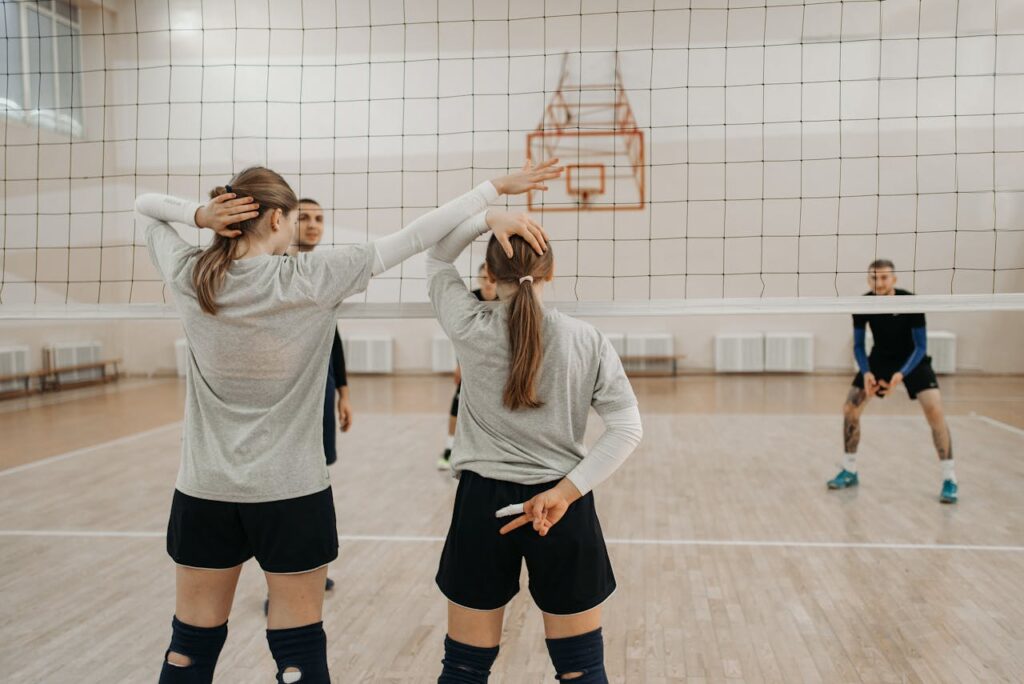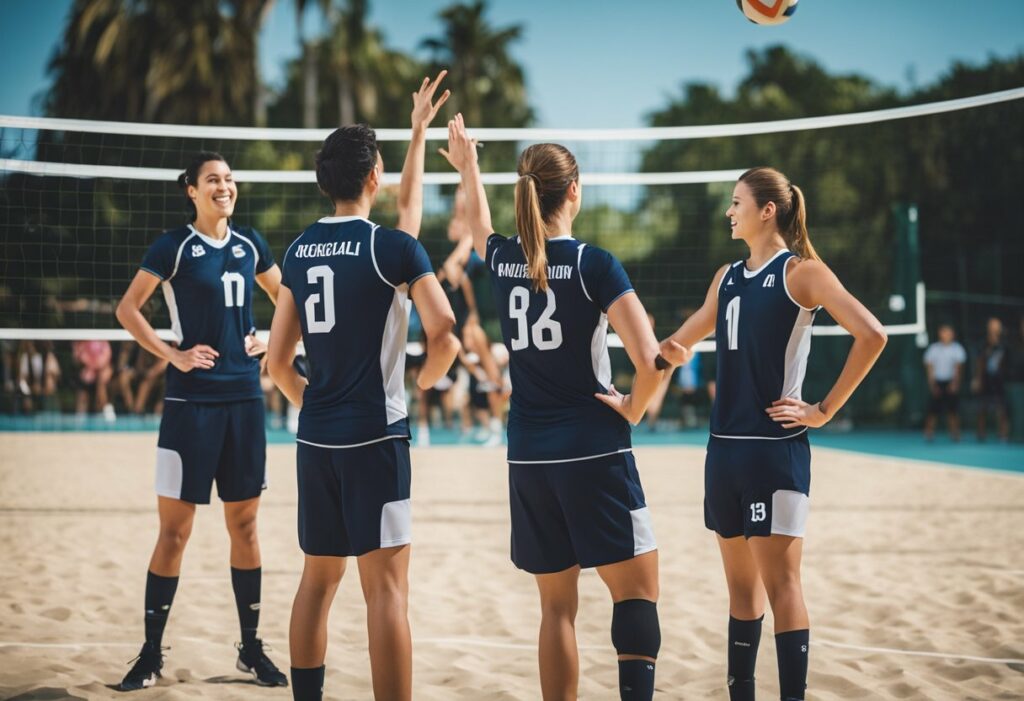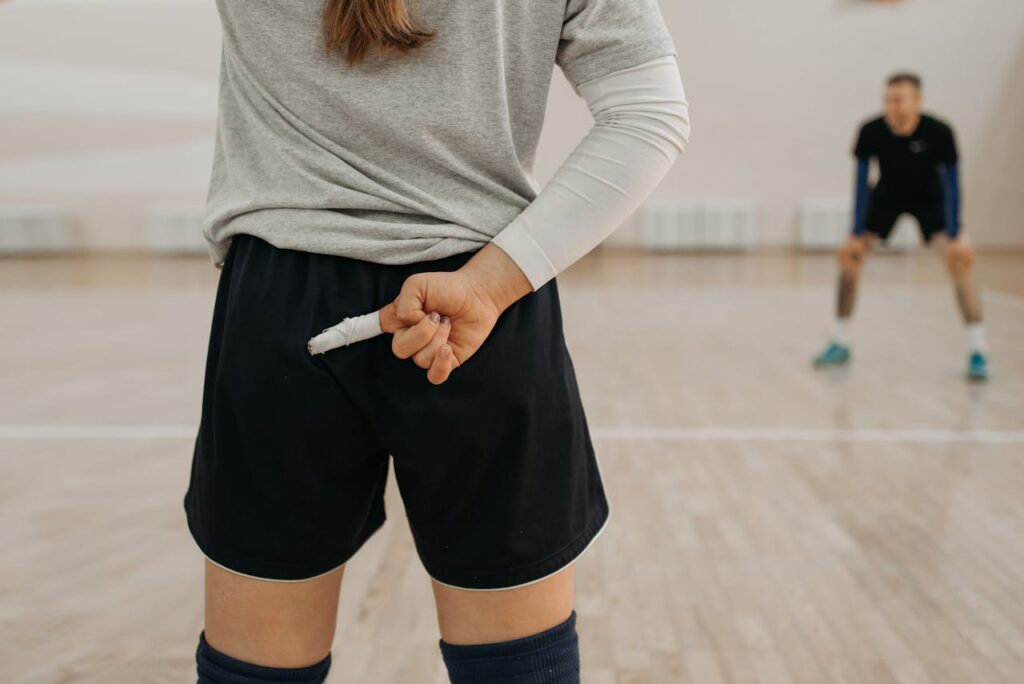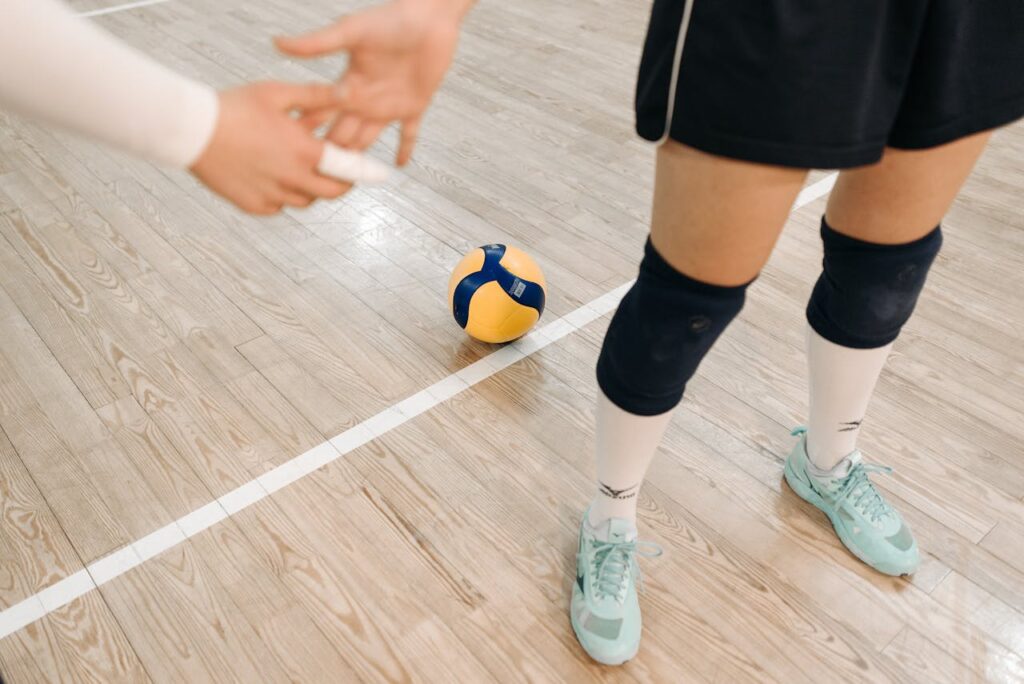Volleyball hand signals are a key part of the game. They help players communicate quickly and clearly on the court. Knowing these signals can enhance teamwork and improve game strategy.
Players and coaches use hand signals to indicate plays, formations, and serves without shouting. This silent language ensures that opponents do not catch on to their plans.
It’s a fun challenge to learn and master these signals.

Whether someone is just starting to play or is looking to refine their skills, understanding these signals makes a big difference. By reading this article, players will discover the most common hand signals and how to use them effectively in games.
The Basics of Volleyball Hand Signals
Volleyball hand signals are crucial for effective communication among players and coaches. These signals help teams stay organized and make quick decisions during matches.
Understanding the Essentials
Hand signals in volleyball serve as a silent language. They allow players to convey information without shouting. Effective signals keep teams focused and connected on the court.
Each signal has its own meaning. Every player needs to know them. This helps avoid confusion during plays. When a player raises a specific hand, teammates know what to expect. Learning the basics is key for smooth gameplay and team success.
Common Hand Signals Explained
Here are some common hand signals used in volleyball:
- Closed Fist: Indicates a high ball set.
- Open Hand: Signals for a quick set.
- Two Fingers: Indicates a back row attack.
- Thumb Up: Suggests a play for the outside hitter.
Players should practice these signals. It helps everyone feel confident and aware. Coaches often develop unique signals for their teams to enhance communication.
Knowing these signals can truly improve teamwork on the court, leading to better game performance.
Communicating with Teammates

Effective communication is key in volleyball. It helps players work together, make quick decisions, and improve their overall game. Hand signals play a big role in this process.
Building Team Synergy
Team synergy is all about players working together smoothly. Practicing hand signals during drills helps develop a common language. This way, everyone understands each other on the court.
Tips for Building Team Synergy:
- Regular Practice: Set aside time for players to practice signals.
- Clear Signals: Make sure every player understands each signal’s meaning.
- Feedback Sessions: After practices, discuss what worked well. This encourages open communication.
When players feel connected, they perform better and have more fun!
Pre-Serve Strategies
Before serving, communication is crucial. Players need to know who will receive the ball and what to expect next. Hand signals can do this easily.
Key Pre-Serve Strategies:
- Designate Receivers: Use signals to indicate who will take the first touch.
- Signal Plays: Have specific signals for different plays to keep opponents guessing.
- Stay Positive: Encourage teammates with signals. A thumbs-up can boost morale!
Clear communication helps set a strong tone before each point.
In-Game Adjustments
During a game, situations change quickly. Teams must adapt while staying connected. Hand signals provide a way to make adjustments without shouting.
Effective In-Game Adjustment Techniques:
- Real-Time Signals: Use quick, simple signals to change plays instantly.
- Focus on Eye Contact: Players should look at each other to share quick ideas without confusion.
- Stay Alert: Players must be aware of the game flow to react promptly.
With strong in-game communication, teams can shift strategies and react quickly to opponents.
Hand Signals for Different Plays

Hand signals are crucial in volleyball. They help players communicate quickly during games. This section covers key signals for offensive plays, defensive formations, and special tactics.
Offensive Play Calls
Offensive hand signals help a team coordinate attacks. The main signals include:
- Closed Fist: Indicates a back-row attack.
- Open Hand: Signals a quick set or fast play.
- Two Fingers: Calls for an outside hit, usually aimed for the left side.
Players need to remember specific signals to react swiftly. Coaches often show these signals during practice. Clear communication leads to better teamwork and effective plays.
Defensive Formations
Defensive hand signals show how a team will position itself against the opponent. Common signals include:
- One Finger: Means individual blocking. Each player focuses on their opponent.
- Two Fingers: Indicates a double block. Two players will work together to stop a spike.
- Hands Over Head: Signals a back-row defense, telling players to cover the deep court.
These signals help players respond effectively. Practicing defense signals can improve the team’s reaction time.
Special Tactics
Special tactics require signals that might surprise the opponent. Important signals are:
- Thumbs Up: Calls for a timeout or special play.
- Circular Motion: Requests a surprise play, like a setter dump.
- Waving Flag: Indicates a transition from defense to offense.
Using these signals creatively can catch opponents off guard. Teams that master special tactics can often gain an advantage in crucial moments.
Advanced Hand Signal Techniques

These techniques help players communicate better and create more strategic plays. Mastering these advanced signals can greatly improve team performance.
Deceptive Signals
Deceptive signals are a way to confuse the opponents. A player can use a signal that looks like one play but leads to another. For example, she might raise one hand for a set, but then quickly change to send a different signal for a spike.
Key Points:
- Use signals that seem familiar to opponents.
- Change signals regularly to keep the other team guessing.
Practicing these signals during training can help a team become more unpredictable. They can also involve faking movements. This adds to the confusion and can lead to scoring opportunities.
Quick Decision Making
Quick decision-making signals are essential during fast-paced games. Players must communicate clearly and instantly. A swift hand signal can tell the setter to adjust their play on the fly.
Key Points:
- Create a set of quick signals for different plays.
- Use simple gestures that everyone understands.
For example, a player might point in a specific direction to indicate where to set the ball. Being clear and fast helps prevent mistakes. These signals should become second nature so that they can be used during any game moment. This level of preparedness can give a team the edge they need!
Custom Hand Signals for Teams
Creating custom hand signals can give teams a unique way to communicate during games. These signals help players understand plays without needing to shout. Teams can build trust and improve their chemistry through these shared signals.
Creating Unique Team Languages
Custom hand signals should match the team’s style and needs. For instance, a team may create signals for different plays, like a block or a quick set. Players can brainstorm together to come up with ideas.
Using simple movements is key. For example:
- Fist: Indicates a high ball.
- Two fingers: Calls for a back-row attack.
- Open hand: Signals a defensive formation.
With teamwork and creativity, these signals can become second nature. The more players practice, the quicker they can react during intense moments.
The Impact on Team Dynamics
Custom hand signals can transform team dynamics. When players have their own signals, it fosters a sense of belonging. Teams feel more connected and in sync during games.
Moreover, these signals reduce confusion on the court. Players spend less time guessing each other’s intentions.
Strong communication enhances performance. As players use these signals, they build trust in each other. This can lead to better teamwork and improved outcomes during matches.
Practicing Volleyball Hand Signals
Practicing hand signals is vital for effective communication on the volleyball court. Players need to be clear and focused while using these signals during games and practices.
Drills and Exercises
To become skilled at hand signals, some specific drills can help. A good exercise is the Signal Recognition Drill. One player makes a signal while others must quickly identify it. This can be done in pairs or small groups.
Another effective drill is the Signal Relay. Players line up and pass signals down the line. This helps everyone learn to recognize and respond to signs quickly. Incorporating visual cues can also help players remember signals better.
Practicing in front of a mirror allows players to check their form and clarity. Regular practice builds confidence and makes signals second nature during games.
Applying Signals in Scrimmages
Using hand signals in scrimmage games gets everyone comfortable under game-like conditions. Coaches should encourage players to use signals during play. For example, the setter could use a specific hand sign when making plays.
To reinforce this, coaches can set specific points in the scrimmage for players to only rely on signals for communication. This builds teamwork and helps players react quickly.
Keeping a signal chart on the sidelines can remind players of their signals. Constant practice makes signals more effective when the real game begins. Each practice focused on signals contributes to stronger teamwork and success in matches.
Interpreting Opponent’s Signals
Recognizing the signals from opponents can provide valuable information during a volleyball match. Understanding these cues is key to anticipating plays and gaining a competitive advantage.
Gaining a Strategic Edge
By closely observing the hand signals of the opposing team, players can predict their next moves. For example, if a setter signals for a quick play, the defense can adjust their positioning.
Common signals include:
- Open Hand: Indicates a high ball set.
- Closed Fist: Suggests a quick attack.
- Two Fingers: Often means a back-row attack.
Players should communicate these observations with teammates to adjust their strategy in real time. This teamwork can lead to successful defensive plays, disrupting the opponent’s tactics.
Legalities and Fair Play
It’s important to note that players must stay within the rules when interpreting signals. Using signals from opponents for unfair advantage, like spying, is against the spirit of the game.
Teams should focus on honing their skills and understanding their opponents’ signals through practice.
Coaches often encourage players to have open discussions about signal interpretation. This creates a respectful environment and promotes fair play while maximizing the team’s competitive edge. Remember, knowledge is power in volleyball!



